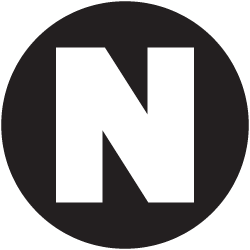If you love fitness and exercise, and enjoy working with many different kinds of people in a variety of settings, becoming a personal trainer might be just the right career for you.
You’ll be able to exercise during the day between meetings with clients, you'll have the chance to use your enthusiasm for fitness to motivate your clients and help them get excited about getting into shape, or getting into better shape.
But exercise is only one aspect of being a personal trainer. If you’re running a business, you’ll also need to take care of the business side of your work.
Like any other business, you’ll need to tend to managing your clients, scheduling appointments and processing personal trainer legal forms. That's not as hard as it might sound, and we've created a guide to help you understand the various forms that personal trainers most often use.
Personal Trainer Legal Forms
No two personal trainers will offer exactly the same services. As a result, not everyone will need the identical personal trainer paperwork; however, there are some essentials that everyone should have. The good news is that in most cases, you can find templates online and won’t need to create these forms from scratch. Spend time making sure the documents cover
all aspects of your business so that they protect your interests.
Liability Waiver
A
personal trainer liability waiver is an essential piece of paperwork for your business. Whenever someone becomes your client, you should ask them to sign this form. Accidents can happen through no fault of your own and if they do, you will be covered by this waiver. Together with your
personal trainer insurance, you will be able to put any worry aside and challenge your clients to achieve their personal best.
Certificate of Insurance
As a personal trainer, it’s important to have your
certificate of insurance handy at all times. Your certificate is your proof of insurance that enables you to show your clients and employers that you are a serious professional with insurance. Many gyms require this certificate before allowing independent personal trainers to work on their premises. Having the certificate handy will mean you’re always ready to start a new job when it comes up. The good news is that if you're a Next Insurance customer, you can email your Live Certificate to anyone from our website, 24/7.

Goal Setting Forms
People who come to personal trainers generally have their own personal goals. In order to guide your clients properly, it’s important to know what these goals are in order to create an exercise plan that will enable them to succeed. Goal setting forms allow the client to see their goals in front of them, which helps to increase motivation. Keeping this paperwork lets you to revisit the client’s goals with them in the future. You can use a simple set of questions and write down answers, or you can create your own form with questions such as "what are you hoping to achieve?" and "how will you measure your success?"
Personal Training Contract
We highly recommend that you have a personal training contract for all new clients to sign. Also known as a personal training client agreement form, your contract should set out your policies regarding cancelled or rescheduled sessions, late arrivals, no-shows, refunds and more so there are no misunderstanding or awkward moments between you and your client in the future.
PAR-Q Form for Personal Trainers
The
PAR-Q (Physical Activity Readiness Questionnaire) is a standardized form used to assess whether a new client is physically able to participate in an exercise program. The simple-to-use checklist will help you determine if you can put together an exercise program or if your client needs medical clearance from a doctor before they can exercise. The PAR-Q form for personal trainers is a must!
Fitness Assessment Form
One of the most important personal training assessment forms for you to have is the
fitness assessment form. There are many different ways you can assess your clients and you need to find the method that works best for you. You can find existing personal training forms online or create a custom form yourself. It is generally useful to add objective measures that can be rechecked in the future to assess progress. Weight, flexibility, strength, stess tests and walking tests may all be useful measures to include. Incorporating personal trainer client tracking forms into a bundle you sell to clients can help you measure their progress.
Consent and Disclaimer
When you’re working with a client, particularly in a physical situation, it is important to have their consent for all the tests, assessments and exercises you do with them. At the same time, a
personal trainer disclaimer form will cover your business if your client does not see the results they hoped for.
Conclusion
It may seem like you have a large bundle of personal trainer client forms and that these will take a long time to go through. From the personal training initial consultation form to your certificate of insurance, each form is important. These will help you set goals, explain your program to you client and measure their progress down the line. They help you to create successful and effective exercise routines for each individual client, while ensuring your business is well looked after.







